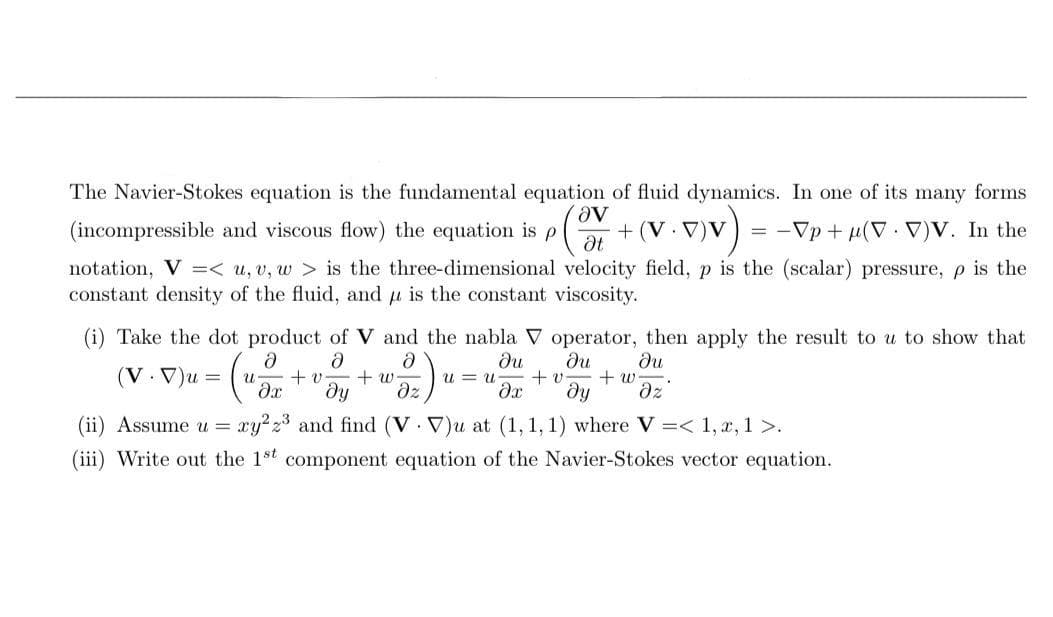The Navier-Stokes equation is the fundamental equation of fluid dynamics. In one of its many forms (incompressible and viscous flow) the equation is p dt + (V. V)V) = -Vp + µ(V · V)V. In the notation, V =< u, v, w > is the three-dimensional velocity field, p is the (scalar) pressure, p is the constant density of the fluid, and u is the constant viscosity. (i) Take the dot product of V and the nabla V operator, then apply the result to u to show that du du (V.V)u = du + w + v + w- u = u + v dz he (ii) Assume u = ry 23 and find (V V)u at (1, 1, 1) where V =< 1,x, 1 >. (iii) Write out the 1st component equation of the Navier-Stokes vector equation.
Fluid Pressure
The term fluid pressure is coined as, the measurement of the force per unit area of a given surface of a closed container. It is a branch of physics that helps to study the properties of fluid under various conditions of force.
Gauge Pressure
Pressure is the physical force acting per unit area on a body; the applied force is perpendicular to the surface of the object per unit area. The air around us at sea level exerts a pressure (atmospheric pressure) of about 14.7 psi but this doesn’t seem to bother anyone as the bodily fluids are constantly pushing outwards with the same force but if one swims down into the ocean a few feet below the surface one can notice the difference, there is increased pressure on the eardrum, this is due to an increase in hydrostatic pressure.

Trending now
This is a popular solution!
Step by step
Solved in 3 steps









